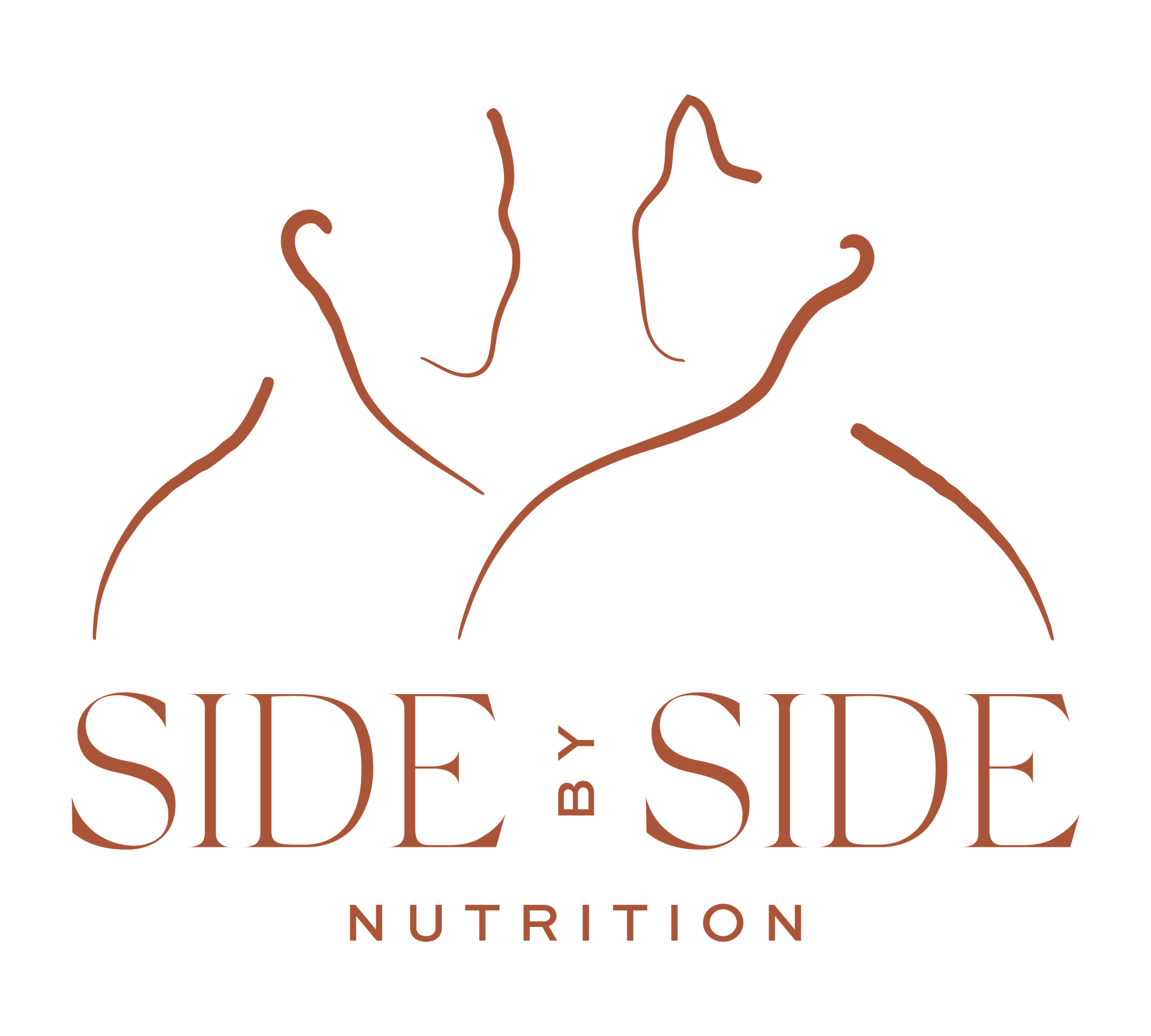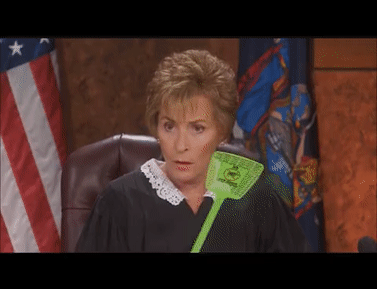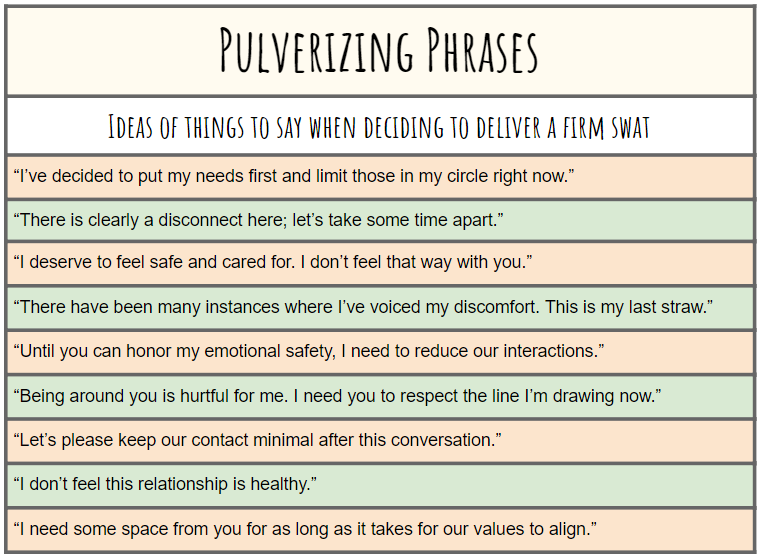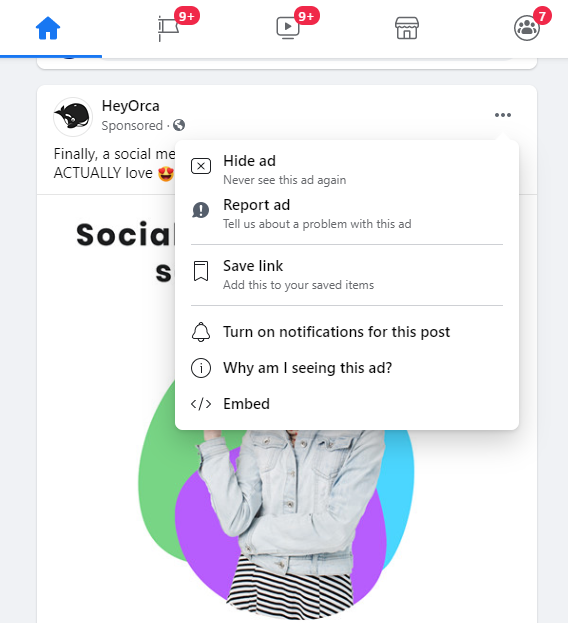Grow as You Go Week 4: Pest Control
Life Finds a Way
Welcome back! Hurry, come on, don’t let the bugs in!
On a scale of 1 to 2020, how much negativity are you facing today? When it comes to the struggle, I’m sure I don’t have to tell you how real it is. I am writing this in late September 2020, the gift that keeps on giving. (Or rather, taking...) On the one hand, it can be very comforting to know the whole world is in turmoil and you are not alone in whatever suffering you’re facing. On the other hand, UGHHHHHHH! Are we ever going to catch a break?!
I actually took a little pause in the series before penning this entry, as I was struggling to write about combating negativity at a time when all I want to do is wallow in it. You know how quicksand was presented as a very real and prevalent danger back when we were kids? Well, physical quicksand has yet to come up for me, but metaphorical quicksand can often have me drowning. It doesn’t take much to get bogged down by the weight of stress, sadness, losses, and change. But just like with quicksand (I presume, again, I’ve never actually tried it), the more you flail and thrash in those conditions, the deeper you will sink. Actually, I just looked up “how to escape quicksand,” and gee if there wasn’t a more perfect metaphor for dealing with negativity. Apparently, the best way to free yourself begins with regaining a sense of calm. But isn’t that easier said than done these days? How can you be expected to stay calm when your loved one is ill, or rent is overdue, or you haven’t had a day off in weeks? One way to approach this is to view it as a step toward progress, not perfection. It may not be possible to take a full-on “Me Day,” but do you have 60 seconds to take a few deep breaths? Finding stillness is challenging in a bustling world, but perhaps you can use that bustle to your advantage, by naming it in a grounding technique. Whatever you do, try to reach for a healthy coping skill instead of grasping onto old habits of manipulating food or your body for a sense of control.
The next move in escaping quicksand is to loosen the hold the mixture has on you by wiggling your legs. In life, we can model this type of gentle disruption by making the tiny changes which are available to us. This may require a little creativity, because at first glance, it could seem like 100% of the situation is out of our control. But where possible, try to take back just 1%, or 10%, or whatever you can. Like if a loved one is ill, for example, could you help prepare meals for them, or pick up their medication? If rent is overdue, can you communicate with your landlord to workout a payment plan for the month? If you haven’t had a day off, could you speak with your supervisor or make trades with a colleague? None of these examples involve erasing the problem, but instead finding wiggle room to loosen the grip.
Once you have created some more space in your quicksand, the next step is to try to lay back flat on the surface. This literally distributes your weight so that it is harder to sink. For our purposes, I see this step as two-fold: first, in laying back, you gain a new perspective from which to view the situation. Second, you can redistribute the weight of your stress.
Picture yourself stuck in a sludgy, heavy, gritty pool of your current stressors below you. Maybe as you look down you see finance, family, food, future, fear, or feelings. Maybe you see a bunch of tiny, nagging grains or large, painful shards. Whatever makes up your quicksand, it is weighing you down with discomfort and sometimes danger. Now try to lay back, float up, and turn your gaze to the sky. Perhaps in this new vision you see possibility, options, peace, and a path forward.
There’s a reason we humans are often so inspired by a phrase such as “light at the end of the tunnel.” We are hopeful creatures, and we are greatly strengthened by even the slightest possibility of situational improvement and therefore survival. If you’ve ever seen a plant growing from a sidewalk crack or straight through a brick wall, you’ll agree that life is resilient, and it fights to find a way. The promise of a way out, no matter how far, can propel us to do what was previously impossible. By looking up from your quicksand, you may notice an option you didn’t see before, or an ally who you forgot was there. At the very least, you may simply feel the relief in your neck from changing positions after looking down for so long.
“No matter how dark the dark can get, we will always be drawn to the smallest speck of light... because in it, there we always find hope.”
Often, people equate laying back or acceptance as a sign of weakness or defeat. But I’d like to offer this different narrative, where we acknowledge this option as a strategic show of quiet strength.
Besides the new view which can help us progress, part of this process may be for balance and redistribution. When we point all our might towards one problem or set of issues, what are we missing in other areas? Where might that energy be more productively spent? Using our previous examples, if your loved one is sick, part of “laying back” may mean trusting their healthcare professionals with helping them improve. Maybe making a conscious effort to redirect some of your negative thought patterns around that situation to deciding how you can help your other family members cope or spending quality time together. If rent is overdue, can you “lay back” and seek funding assistance to stretch your budget this month, or enlist public resources to ensure you are still able to provide yourself? (For help with food assistance, please click here, here, and here.)
There are many ways in which laying back can help us with a new vantage point, while also sharing the weight. From there you should be able to backstroke your way out of physical quicksand, but metaphorical quicksand, too. Slowly but surely pulling yourself free, and towards the surface where you started by working backwards with what strength you’re regaining, just a little at a time.
If you’ve made it this far, you are probably thinking “that’s nice, but where are the plants, ma’am?!” Well first of all, I believe I did tell you please picture a palm tree above the whole quicksand metaphor! And if I didn’t, I’m telling you now. So there!
Plants tie in because I am also going to talk about pest control. Have you ever noticed a small army of gnats near your fruit bowl or ravenous aphids plowing through your garden? Sometimes these pests are undeniably overt, and sometimes we need to check for them, like with the silent occurrence of mold.
Unlike infinite, overpowering quicksand, some negatives in nature are tiny, but annoying. And just like in life, we tend to encounter these kinds of pests more often, sometimes daily. Although I doubt anyone reading this has ever had to battle quicksand,* who among us is so lucky to have never been bitten by a mosquito?! Or have a housefly’s thunderous buzzing in our ear? Or one of my least favorites, stung by a vicious ant in defense of its home? Miniscule menaces are ubiquitous; it seems impossible to escape them no matter how much bug spray you bathe in. These are the little things that bug us, such as a passing comment about how we eat or a too-long stare from someone in the dressing room. Just like a pest, these are seemingly harmless, but in reality, they’re everywhere and they can sting; they can destroy. And just like a spider-bite that gets infected or a houseplant that begins to rot, these incidents can become dangerous if left to swell and fester.
*(but oh I insist that you please tell me if you have! kymber@sidebysidenutrition.com)
So how do we combat these every-day nuisances? There are three ways that come to mind, the Pesky Ps, if you will: 1) Pulverize, 2) Placate, 3) Prevent.
Pulverizing is the quick-and-dirty method; think flyswatter. Basically you destroy what’s bothering you, and move on with your day. Placating can be viewed as a more peaceful route, but I find that often you still experience some suffering, even though it may be lessened. In placating, we are either treating the sting after the fact, or giving our pest another thing to focus on. With a physical pest, this could be applying cream to a bite or setting a trap. Prevention is the most enduring method, and it tends to reduce harm on both sides. Think of this like bug repellent; you do not get hurt, and the bug stays away, living to fly another day.
Let’s zoom back out and apply this to our world and our recovery. We’ll primarily focus on pulverizing and prevention. For some great examples on placating, please visit our previous lesson for the APPLES method on ways to discuss harmful language/actions after you’ve experienced it. The other party will hopefully learn and adjust to be more sensitive to not only your needs, but others’ as well. Each of the three Pesky P strategies has its place, and sometimes may work best in combination. Try to be flexible in your approach, and adjust as needed while figuring out what works best for you and your pests.
I personally believe that most people are good and capable of change. That said, not everyone is interested in being good to you or willing to change. For these kinds of pests, pulverization may be the way to go. If you want to be gentle about it, you can definitely try the other methods first, and offer as many chances as you’re willing to give. But once you’ve exhausted all your options, or if you are simply feeling exhausted, don’t be shy in grabbing that swatter. Take a deep breath and shout from your heart a loud, emphatic “SHOO!” You wouldn’t let a mosquito continue to live in your home and sting you repeatedly, so do not allow a person that luxury either. Folks who are “well-intentioned,” but struggle to learn your triggers and boundaries may have hope of being taught. But those who derive entertainment from your struggle are straight-up parasites, and should be dealt with as such.
That mean frenemy from middle school who always has a backhanded compliment? SWAT! That jealous ex who comments negatively on all your photos? SWAT! That nagging aunt who is always pinching your stomach? SWAT! Shut them down and wipe your hands of them. You may be thinking, “what kind of fantasy world does this chick live in that she can swat her friend or aunt without blinking??” Well that is a very good point. Swatting a relationship is not like swatting an anonymous fly, but that’s why we offer chances for improvement until we know it’s not coming. If someone is repeatedly doing something that they know hurts you, that person does not love you. At least, not in the way you deserve to experience love. Let them fly out the window of your life until they can demonstrate they deserve to be let back in. Especially if you are the one doing most of the positive work in the relationship, I imagine it will begin to dissolve soon after you stop carrying your part. (Ooh and think how great your back is going to feel without that heavy load!)
Need something a little more aggressive than opening a window? Below are some ideas and phrases for this pulverizing approach.
“An ounce of prevention is worth a pound of cure.” That phrase is why I got into nutrition in the first place. There is so much we can do to set ourselves up for success just by planning ahead and taking preemptive action steps. When it comes to pest control, this is the way to go. Less mess and lives saved (both plant and pest), what’s not to like? Prevention in people often looks like education. By informing others around us what stings, we can prepare them not to do it in the first place. A great way to do this is to be open with our loved ones and those who frequent our environment. Besides family and friends, this can include coworkers, health professionals, classmates, teammates, and more. We can tell these folks as they come into our lives that we live with conditions that make us sensitive to certain topics or conversations. Think of these disclosures as the banner above the entrance to our world, a set of guidelines that helps others know how best to interact in your space. In most cases, I guarantee you are not taking anything valuable away from them. (i.e. no one needs to voice their displeasure with parts of their body; they won’t melt if they can’t declare what foods they think are “good” or “bad” out loud.) On the contrary, you are gifting them with another way to view the world from a more inclusive perspective and challenging them to find compassion in the ways they treat themselves.
If you don’t feel comfortable being up front with these groups about your specific needs, you still have options for prevention. You can share resources with them, such as websites or evidenced-based studies about the harmful effects of eating disorders, fatphobia, body shaming, and diet culture. Feel free to share it to the group as a “hey, did you know like almost 10% of people worldwide have/had an eating disorder?” or “I just heard that it’s Weight Stigma Awareness Week. Anyone curious about what that is?” Here are some of my favorite places for this information:
National Eating Disorder Organization
Project Heal
Association for Size Diversity and Health (aka HAES)
National Eating Disorders Association
Trans Folx Fighting Eating Disorders
Eating Recovery Center
NEDA on Eating Disorders vs. Disordered Eating
Families Empowered And Supporting Treatment for Eating Disorders (AKA F.E.A.S.T.)
Academy of Nutrition and Dietetics
and of course, we at Side by Side Nutrition are local and always happy to help www.sidebysidenutrition.com
Another way you can be proactive in prevention is to curate your environment. Now of course, we cannot live in a bubble, although it’s starting to feel pretty plausible with social isolation raging on at 6 months. But there are almost always elements of our environment which we can control. For example, social media is a place where a lot of us “live” more than we do in the physical world. Take a look at your friend list or the pages you follow. That gal from church who is selling a new “fat-burning coffee” every week? Eh, you can unfollow her and check back once a year to see photos of her cute kids. Getting too many ads about weight loss programs in your area? You can report them using that little button in the top right corner, and click the option that declares it irrelevant and blocks it from popping up again. Actually, doing this tailors the other ads you see and eventually you’ll see less and less of these things. (it learns!)
But more than what you eliminate, what can you add to build your social world? For one thing, you can follow accounts that are eating disorder-informed, diverse, and body positive. You can seek out accounts that are expressly about recovery or simply people living their lives without constant commentary on food and body. Our instagram is a great place to start, and you can also see who we follow to begin crowding-in that brain-boosting positivity. The algorithms work both ways, so thankfully the good attracts good, and you’ll start to see suggestions for more of these types of accounts. Negativity is all around us, but thankfully light quickly overpowers darkness. I hope you notice that the more space you allocate to the good, the less room there is for the pests.
“Forget da haters.”
I believe it was the great William Shakespeare who once uttered the immortal words, “haters gonna hate.” And that’s true no matter where you are or how far you’ve come. So much of this whole life experience is beyond our control, but I encourage you to take charge in healthy ways where you can. Be mindful and methodical with the quicksand you encounter; address pests as they come. Spray the garden of your mind with as much positivity and pest repellent as you can to keep yourself flourishing safely and living peacefully.
To Recap Lesson IV: Pest Control (life finds a way)
Takeaway #1 Don’t panic; find stillness and carefully assess the situation
Stay calm, find wiggle room, and adjust your perspective to begin finding solutions
Takeaway #2 Be vigilant in checking for pests; plan your course of elimination
Identify stressors and try multiple methods for reducing the pain or prevalance. Make peace with the possibility of eliminating pests for your safety
Takeaway #3 Prevention goes a long way
Empower other with knowledge where possible, and arm your environment against negativity
“With the world appearing to crumble around us, it can be hard to dispel negativity or even remember what it is like to be free from it. The tribulations of circumstance can envelop our sense of helplessness and sometimes quash our desire to press on. Hope, however, is here, somewhere, every day. If you need inspiration, think of the steadfast trees that burst through concrete, or the radiant blooms which unfold in the night. We living creatures are a perseverant force, magnetically attracted to the promise of survival. Despite fire or flood, plague or pest, never you doubt we are built to endure. Simply put, life finds a way. ”
About the Author
"Kymber Stephenson is a Registered Dietitian Nutritionist living and working in the Greater Denver area. Her experience began with a love of food which led her to pursue a degree in Culinary Arts from Johnson & Wales University. As her love of science and helping people wove with that initial path, she continued on to a Bachelor of Science in Culinary Nutrition with a dual concentration in clinical dietetics and culinary food science.
Kymber is especially passionate about eating disorder management and prevention. In this vein, she focuses on educating clients about the multi-faceted ways history, marketing, food systems, culture, psychology, and body image affect health and relationships to nutrition, food, and body. She works with clients to truly fall in love with food again, acknowledging not only its nourishing properties, but truly embracing its comforts, tradition, and fun! Working in a client-guided manner with a Health at Every Size approach, she strives to help each unique person reach their idea of peace and satisfaction in their bodies and their overall lives. Kymber's driving philosophy is that all people deserve equitable access to quality food and evidence-based nutrition education, regardless of status or background."















